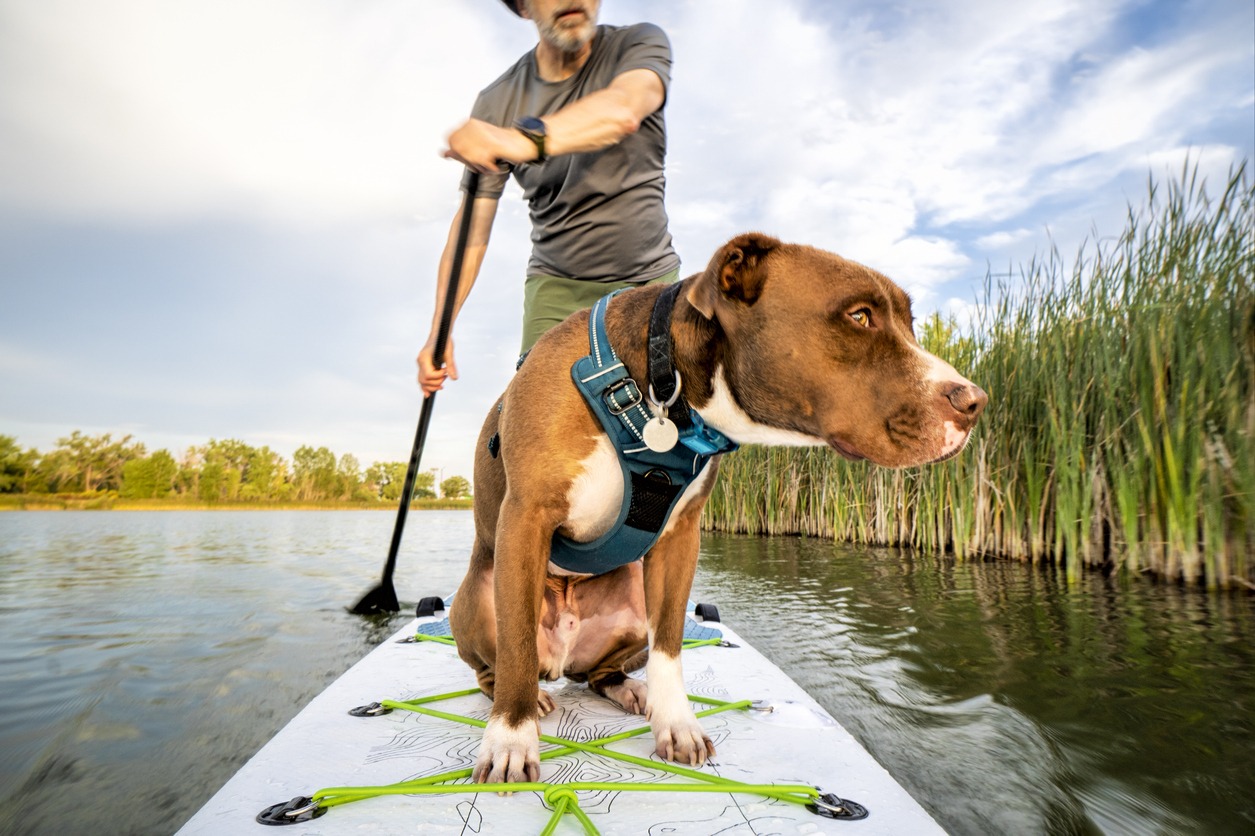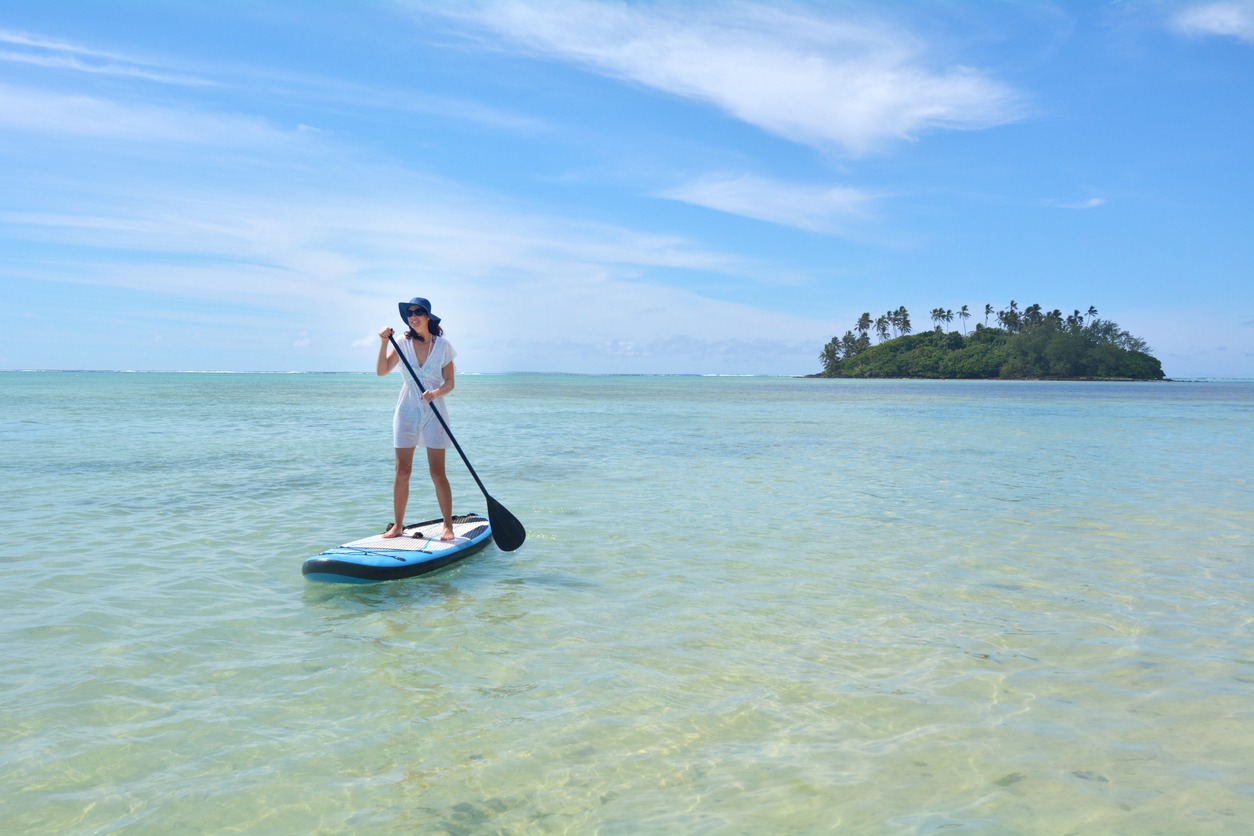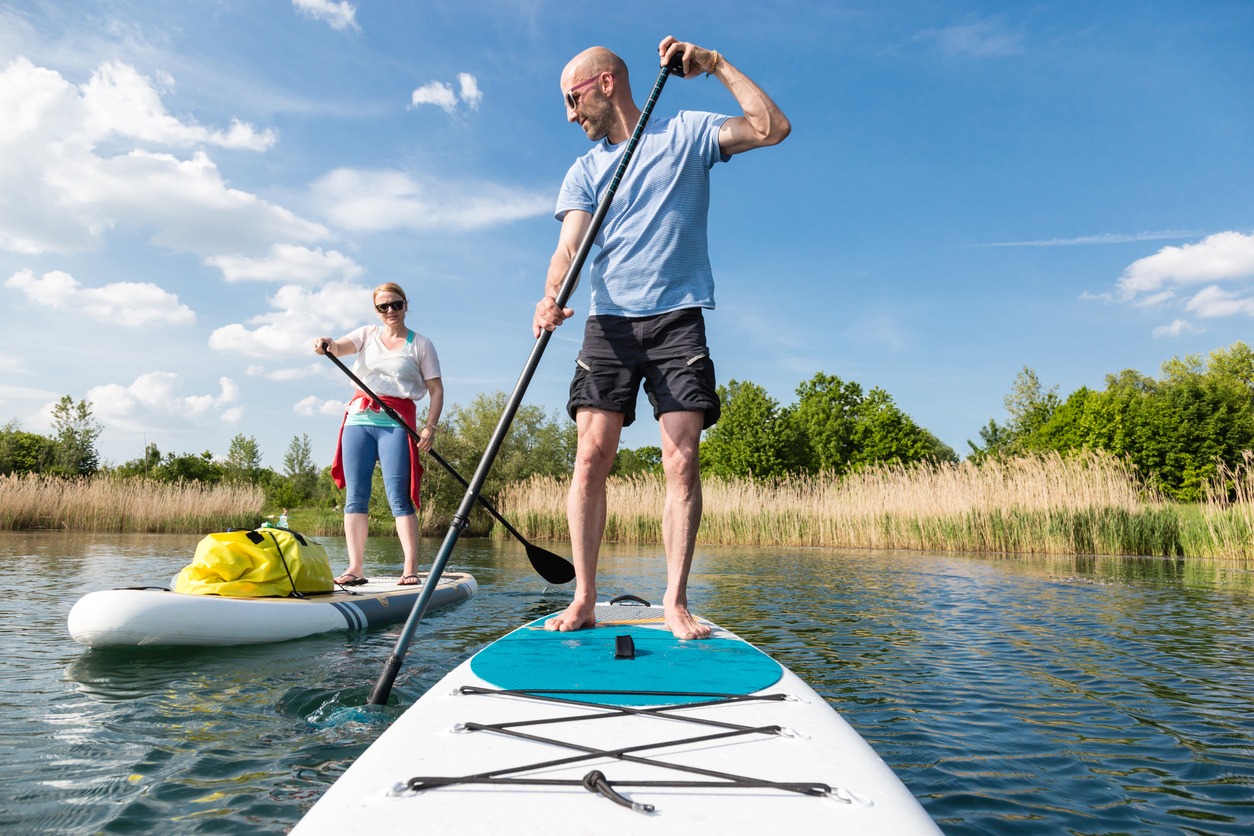Guide to the Sport of Stand Up Paddleboarding (SUP)
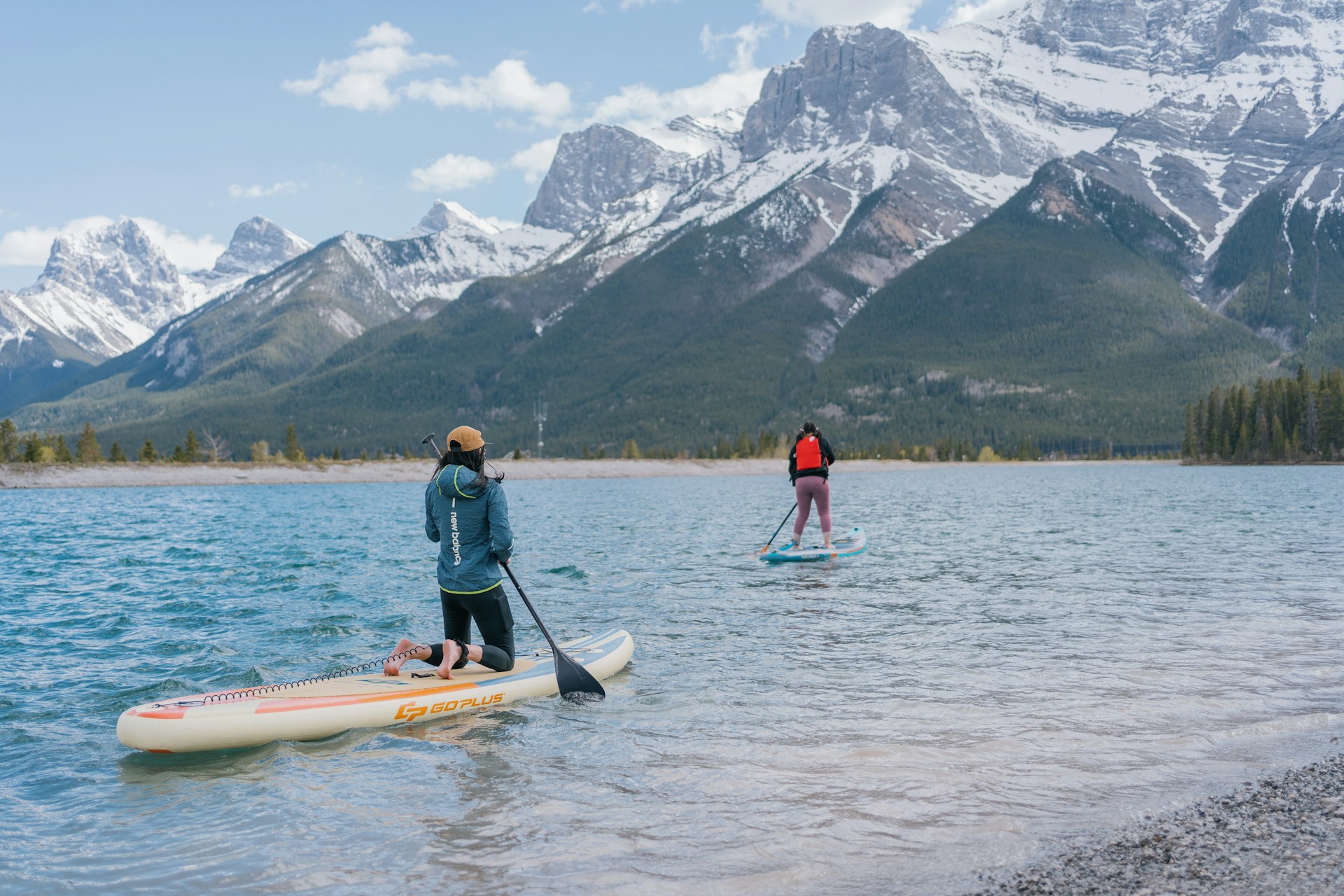
Stand up paddleboarding (SUP) is a versatile water sport that combines surfing and paddling. You'll stand on a long, wide board and use a single-bladed paddle to glide across calm waters or ride waves. To get started, you'll need a paddleboard, paddle, leash, and personal flotation device. Choose an inflatable board for easy transport if you're a beginner. Learn proper techniques like paddle grip, launching, and stroke mechanics to guarantee safety and efficiency. SUP offers a full-body workout while allowing you to investigate lakes, rivers, and coastal areas. As you progress, you can probe advanced skills and even participate in competitions or events.
What Is Stand up Paddleboarding?
Envision yourself gliding across calm waters, standing tall on a sleek board with paddle in hand. This is the essence of stand up paddle boarding (SUP), a versatile water sport that's taken the world by storm. SUP combines the thrill of surfing with the tranquility of paddling, offering a unique experience for water enthusiasts of all skill levels.
Stand up paddle boards are longer, wider, and thicker than traditional surfboards, providing greater stability as you navigate various water environments. Whether you're exploring a serene lake, riding ocean waves, or cruising down a river, SUP adapts to your surroundings. You'll use a single-bladed paddle to propel yourself forward, engaging your core, arms, and legs in a full-body workout.
SUP's popularity has soared since its Hawaiian origins in the 1940s, with options now including inflatable boards for easy transport and storage. As you start your SUP expedition, remember these tips: choose the right board size for your body and skill level, maintain proper paddling technique, and practice balance drills to improve stability. With time and practice, you'll become proficient in the art of stand up paddle boarding and uncover a new way to enjoy the water.
Essential SUP Equipment
Now that you understand the basics of stand up paddleboarding, let's investigate the gear you'll need to get started. The most vital piece of equipment is the stand up paddle board itself. These boards range from 8 to 14 feet in length, 30 to 36 inches in width, and 4 to 8 inches in thickness. If you're a beginner or have limited storage space, consider an inflatable paddle board for easy transportation and storage.
Your paddle is equally important, and it should be 6 to 10 inches taller than you. Paddles come in various materials, handles, blades, and shaft shapes, so choose one that feels comfortable. Don't forget about safety equipment: leashes keep you connected to your board if you fall, while personal flotation devices (PFDs) are essential and often required by law.
To protect your investment, use a board bag during transportation and storage. Fins are another essential component, providing stability and control on the water. As you become more experienced, you may want to experiment with different fin configurations to suit various paddling conditions. With this key SUP equipment, you'll be ready to hit the water and enjoy the sport of paddle boarding safely and comfortably.
Choosing the Right Paddleboard
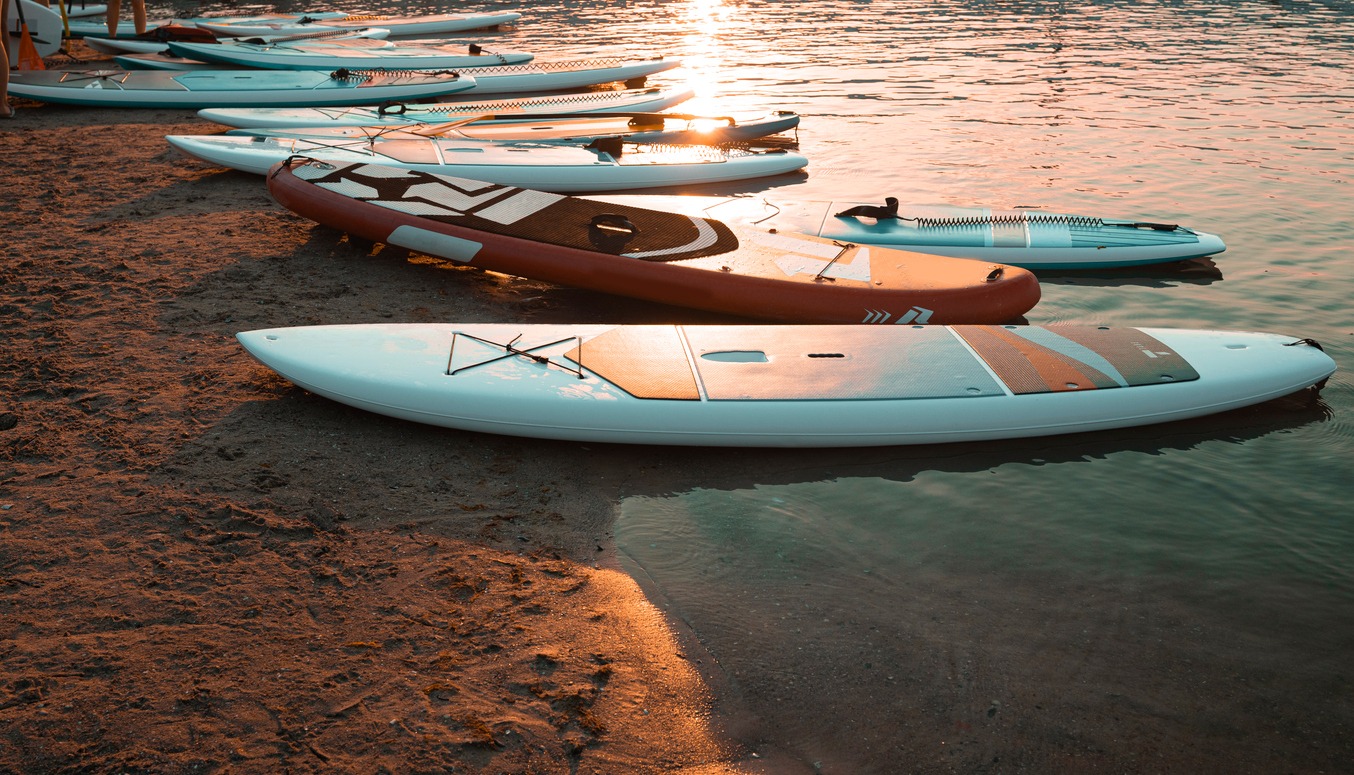
When choosing the right paddleboard, you'll need to examine several factors to guarantee you get the best fit for your needs. For beginners, an inflatable stand up paddle board is an excellent choice. It's easy to move and store, making it ideal if you have limited space. Inflatable boards also offer better stability, which is indispensable for those new to paddle boarding.
Consider your weight and experience level when selecting the board size. Wider boards provide more stability, perfect for beginners. Look for a non-slip surface to ensure better footing and a leash to keep your board from drifting away. These features are essential for safety and comfort during your SUP escapades.
If you're an advanced paddler seeking the best SUP performance, hardboards offer more agility. However, they're less convenient for transport and storage. Regardless of your choice, don't forget other essential equipment like a paddle board bag, personal floatation device, and proper SUP paddle sizing methods. Storing your paddle correctly and finding efficient ways to transport your paddle board will extend its lifespan and make your paddle boarding experience more pleasurable.
Basic SUP Techniques
Learning basic SUP techniques is essential for a safe and enjoyable paddleboarding experience. Start by comprehending the proper paddle grip, dividing the paddle into halves or thirds with your hands positioned shoulder-width apart. This grip certifies efficient and stable strokes as you traverse the water. Diverse disciplines like racing, touring, fishing, and yoga can all be enjoyed with SUP.
When launching your stand up paddle board, follow these steps:
- Enter the water until you're knee-deep
- Position the fin behind you
- Start on your knees before attempting to stand up
As you paddle, fully extend your arms and drive the paddle into the water. Alternate 3-5 strokes on each side to maintain a straight course. If you fall off the board, don't panic. Swim to the side, grab the middle handle with one hand, and use your forearms to push yourself back up.
To improve your balance and control, practice regularly and gradually try new skills. Incorporate activities like paddle board yoga to challenge yourself further. Remember, comprehending these basic SUP techniques takes time, so be patient and persistent. With practice, you'll soon be confidently gliding across the water, enjoying the full benefits of this exciting sport.
Safety Considerations for Paddleboarding
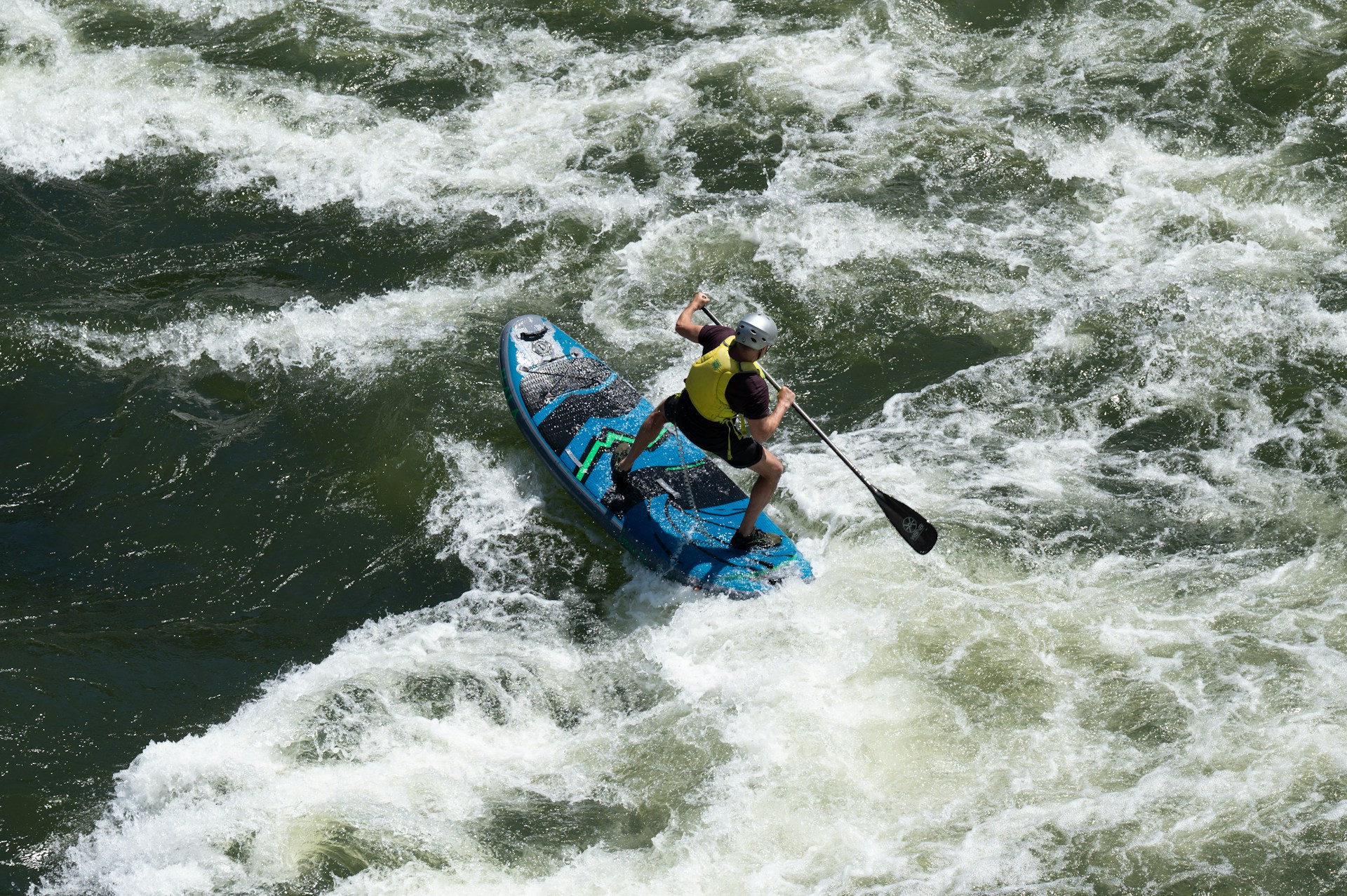
While learning basic SUP techniques is important, prioritizing safety on the water is paramount. Your first step should always be to wear a properly fitted personal flotation device (PFD). It's not just a legal requirement; it's essential for your safety. Don't forget to bring a safety whistle and light to alert others in case of an emergency.
Before you head out, check local water conditions and weather forecasts. Avoid paddling in strong winds, rough waters, or unfamiliar areas. It's indispensable to learn proper paddling techniques and methods for safely getting back on board if you fall off. These skills will help minimize risks and augment your confidence on the water.
Always paddle with a partner or group when possible. Let someone know your paddling location and expected return time. Carry a means of communication in case you need assistance. Remember, safety isn't just about equipment; it's about making smart decisions. By following these guidelines and staying aware of your surroundings, you'll be well-prepared to enjoy your paddleboarding experience while keeping safety at the forefront of your mind.
Popular SUP Locations
Stand up paddleboarding offers enthusiasts a wide array of stunning locations to immerse themselves in. Whether you're a beginner paddler or an experienced SUP surfer, there's a perfect spot for you to practice your paddle grip and traverse the water. Popular SUP locations range from coastal areas to lakes, rivers, and even urban waterways, providing diverse experiences for all skill levels.
If you're looking for breathtaking scenery, head to Lake Tahoe, California. Its crystal-clear waters and mountain backdrops make it an ideal destination for SUP touring and flat water paddling. For beginners, the Florida Keys offer calm, sheltered waters perfect for inflatable SUPs and exploring marine life.
For more adventurous stand up paddle boarders, consider these exciting locations:
- The Columbia River Gorge: Experience wind-driven waves for a thrilling SUP surfing session
- Chicago River: Paddle through an urban landscape, taking in the city's iconic architecture
- Willamette River in Portland: Combine nature and city views for a unique paddle boarding experience
Remember to always follow stand up paddle boarding tips and safety guidelines, regardless of your chosen location. With so many diverse options available, you're sure to find the perfect spot to enjoy your paddle board SUP escapades.
SUP Fitness Benefits
Beyond the stunning locations and scenic expeditions, stand up paddleboarding offers a wealth of fitness benefits that make it an attractive option for health-conscious individuals. As you glide across the water, you'll be engaging in a full-body workout that can burn up to 500 calories per hour, making paddle boarding an efficient way to stay in shape.
One of the key advantages of SUP is its ability to improve your core strength. Maintaining balance and stability on the board requires constant engagement of your abdominal muscles, leading to a stronger, more defined core over time. Additionally, the repetitive paddling motion enhances your cardiovascular fitness and endurance, contributing to better overall health.
For those seeking a unique twist on their practice, SUP yoga combines the balance challenges of paddleboarding with the flexibility and mindfulness of traditional yoga. This fusion not only improves your mental well-being but also enhances your physical fitness.
Lastly, paddleboarding can considerably improve your joint mobility and range of motion, particularly in your shoulders, hips, and ankles. As you paddle and maneuver your board, you'll be working these joints through various planes of motion, promoting flexibility and reducing the risk of injury.
Advanced Paddleboarding Skills
As you progress in your paddleboarding expedition, you'll want to develop advanced skills to tackle more challenging conditions and enhance your overall experience on the water. Mastering techniques like the C-stroke and U-turn maneuvers will allow you to execute efficient turns, while perfecting the sweep stroke enables quick stops and pivots. The tail stop technique, which involves stepping back on the board's tail, offers precise positioning and rapid deceleration.
To further improve your skills, consider incorporating these advanced techniques:
- Practice paddle board yoga to challenge your core stability and balance
- Learn to read water conditions for navigating whitewater and surf
- Perfect complex turns and maneuvers for safe navigation in varied environments
As you become more proficient, you'll be able to explore more challenging conditions, such as whitewater and surf. These environments require skilled paddling techniques and the ability to read water conditions effectively. By honing your advanced paddleboarding skills, you'll not only improve your performance but also open up new possibilities for adventure on the water. Remember to always prioritize safety and gradually progress to more challenging conditions as your skills improve.
SUP Competitions and Events
Increasingly, stand up paddleboarding has evolved from a leisurely activity to a competitive sport with a thriving event scene. If you're looking to challenge yourself or immerse in the SUP community, there's a wide range of competitions and events to choose from.
SUP racing is a popular competitive format, with events spanning from short sprints to multi-day endurance challenges. The World Paddle Association (WPA) oversees professional SUP racing, organizing the annual World Series that attracts top athletes worldwide. For those who prefer riding waves, SUP surfing competitions offer a platform to showcase your skills, with judges evaluating your style, trick difficulty, and wave selection.
One of the most prestigious events in the SUP calendar is the Pacific Paddle Games, drawing elite paddlers from across the globe. However, you don't need to be a pro to participate in SUP events. Many local clubs host recreational activities like SUP yoga classes, fun paddles, and eco-tours, allowing you to connect with fellow enthusiasts and examine your surroundings. Whether you're aiming for competition glory or simply seeking a new way to enjoy the water, there's a SUP event customized for you.

